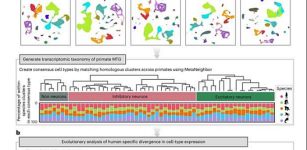Early Life Ecosystems Illuminate Earth’s Evolutionary History
Eddie Gonzales Jr. – MessageToEagle.com – With a new understanding of past life on the planet through fossils, a Mississippi State biological sciences faculty member is helping researchers better predict Earth’s future.
In a new paper published in Proceedings of the National Academy of Sciences, Donald L. Hall Professor of Biology Matthew Brown unearths a specific area of under-studied fossils: microbial eukaryotes—more specifically, testate amoebae from 750 million years ago.
Pictured are two shells of amoebozoa testate amoebae, a diverse lineage of heterotrophic microeukaryotes. The left shell is a cryogenian fossil specimen, estimated to have lived approximately 700 million years ago, while the right shell is a specimen of a modern group of amoebozoan testate amoebae. Credit: Luana Morais and João Alcino
His novel research on testates will continue to help researchers understand Earth’s evolution, thereby allowing better predictions of what the planet may look like millions of years from now.
“Using fossils, we can estimate the divergence times and evolutionary paths leading to today’s testate amoebae found across the globe,” Brown said. “Testates are particularly significant for understanding the history of early Earth and the history of life. They represent some of the earliest confirmed heterotrophic eukaryotes.
“From the data we collected, scientists can now examine the evolutionary history of these intriguing amoebae like never before through bioinformatic approaches called molecular clocks,” he continued. “In evolution, genes and the proteins they encode evolve in a somewhat clock-like manner, making evolutionary changes somewhat predictable and model-able.”
Brown and his co-senior author Professor Daniel Lahr at the University of Sao Paulo, Brazil, collaborated with Brazilian paleontologist Luana Morais; Alfredo Porfirio-Sousa, a visiting scholar from the University of Sao Paulo; Alexander Tice, a previous postdoctoral student in Brown’s lab who is a faculty member at Texas Tech University; and Quentin Blandenier, another past postdoctoral student of Brown.
Today, Porfirio-Sousa and Blandenier are recognized as testate amoebae experts in the research community.
Brown also credits Nicholas Fry, Tristan Henderson and Felicity Kleitz-Singleton, all Ph.D. students in his lab, with assistance on his project.
Written by Eddie Gonzales Jr. – MessageToEagle.com Staff Writer











